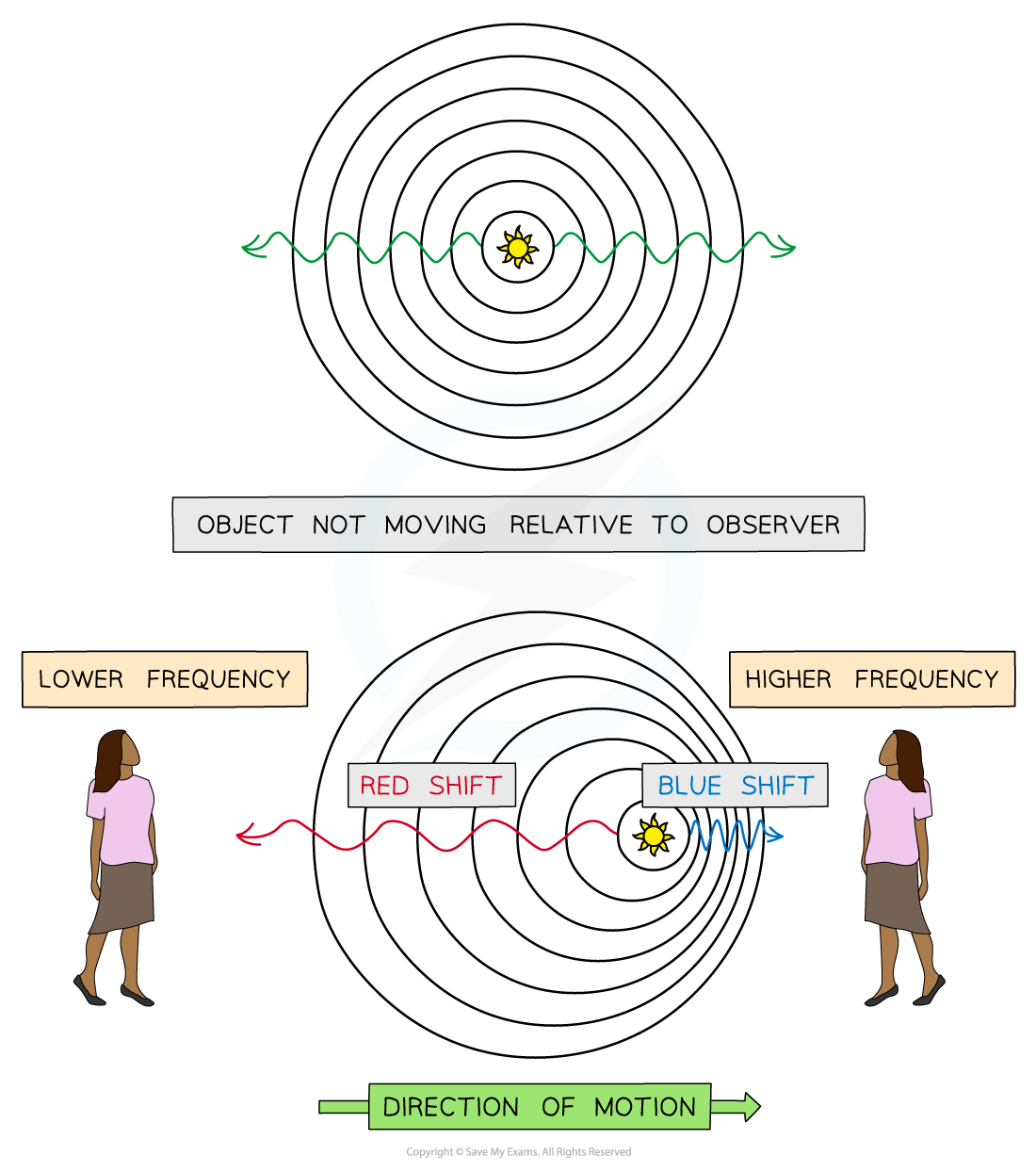Galactic Redshift (Cambridge (CIE) IGCSE Physics): Revision Note
Exam code: 0625 & 0972
Did this video help you?
Galactic redshift
When a stationary object emits waves, they spread out symmetrically
If the source of the waves moves, the waves can become squashed together or spread out
This change in wavelength is known as the Doppler effect
This effect applies to both sound waves and electromagnetic radiation (i.e. light waves)
Doppler effect of light
If a source of light moves towards an observer, the observed wavelength decreases
The wavelength of light shifts towards the blue end of the spectrum
This is called blueshift
If a source of light moves away from an observer, the observed wavelength increases
The wavelength of light shifts towards the red end of the spectrum
This is called redshift
Redshift and blueshift of light

When a light source moves away from an observer, redshift is observed, and when a light source moves towards an observer, blueshift is observed
Observing redshift in distant galaxies
When astronomers compare light from glowing hydrogen in distant galaxies with light from glowing hydrogen on Earth, the light appears to be redshifted
This means the observed wavelength has increased as the light travelled from the galaxy to the Earth
This shows that distant stars and galaxies are moving away (receding) from the Earth
Redshift of light from a distant galaxy

Light emitted from glowing hydrogen in distant objects appears to be shifted towards the red end of the spectrum, showing they are moving away from Earth
The greater the observed redshift:
the greater the distance to a galaxy
the faster the galaxy is moving away from Earth
Examiner Tips and Tricks
You need to know that in the visible light spectrum, red light has the longest wavelength and the smallest frequency.

Unlock more, it's free!
Did this page help you?